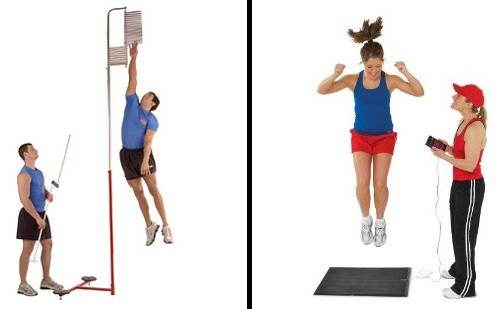 |
| Photo credit from: leanitup.com/: Get UP! The Vertical Leap Workout Plan |
A good vertical jump is a significant resource that probably all players have. For whatever sports vertical jump is used.
There are two main parts of exercise that could actually help to increase your vertical jump:
1. Increased force output
- Measures how much strength or energy can be applied to the ground
2. Increased rate of force development
- Measures how quickly force can be produced and applied
Since that our answer is in two parts, let’s take a look at both of these aspects separately.
Increased Force Output
 |
| Photo credit from: snoridgecrossfit.com/: Back Squat 4-4-4-4-4 & FT: Rows, Back Squats and Lateral Burpee (Over Barbell) |
This sounds simple. It just means you should get stronger. But strength acquisition is a topic that can be overly complicated and drawn out all on its own. So we will look at the most simplified methods. Given our goal of increasing vertical jump height, we will focus specifically on lower body strength.
When developing lower body strength, the king of exercises is the back squat. Specifically, the back squat at a depth below parallel. Squatting below parallel with high loads has been shown to reap the most benefit in the vertical jump.
Rate of Force Development
Simply squatting deep does not help with increasing the rate at which force is developed. Deep squatting is primarily affecting the musculature, but in relation to power or rate of force development, we need to train the nervous system. This means we must focus on recruiting more of the high threshold units. These motor units are most easily recruited by increasing load while simultaneously trying to accelerate that load as quickly as possible.
Olympic lifts are commonly used to recruit these high threshold motor units. Since these lifts are more complex than many other exercises, a technique can limit the progress made. So focusing on a simplified derivative of the clean - the mid-thigh pull could be done.
The mid-thigh pull starts in the same position as the hang clean and requires a triple extension of the ankles, knees, and hips yet do not require the catch that a clean does. Since it is so simple, you can focus strictly on adding weight to the bar, accelerating it upward as quickly as possible, and then letting the weight fall.
Right now, we’ve found exactly the combo of movements we are looking for: the best method of increasing force output and the best method of increasing rate of force development.
These exercises can be done up to twice a week.They can also be done within any training program. The only requirement is that these exercises be done early in your workout since they require force and/or power and any fatigue will inhibit this program’s effectiveness.
SOURCE:



